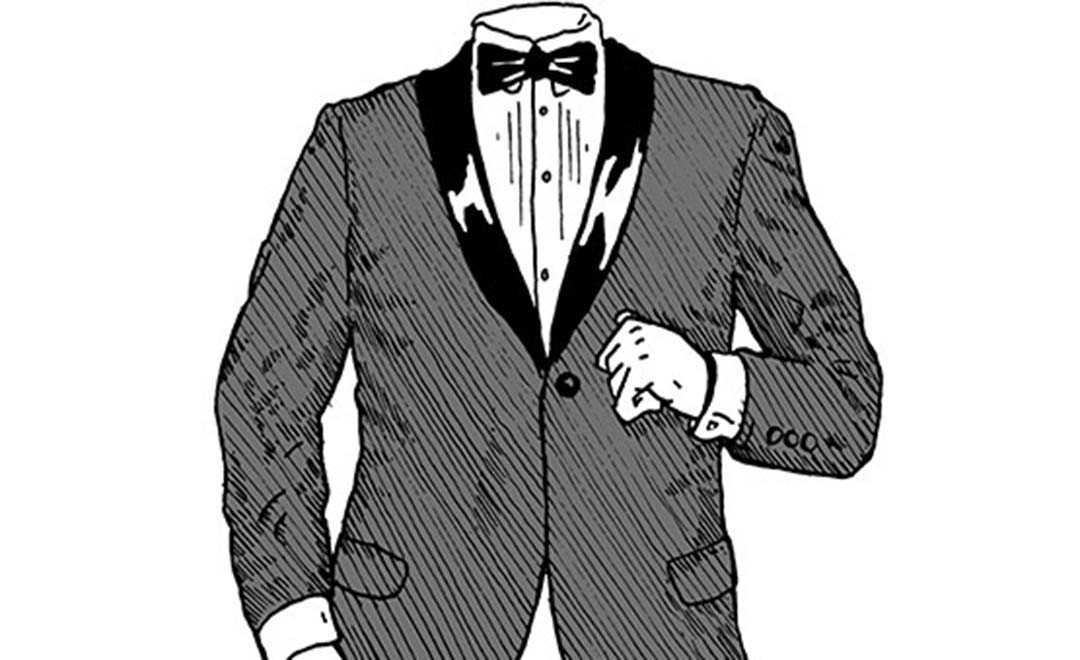The key to a winning black tie look is about understanding the finer details. First, it should be noted that black tie dress code is not actually the pinnacle of formalwear – that is reserved for white tie. In comparison, black tie is actually considered semi-formal eveningwear. Which brings us to the next point.
A tuxedo is never worn before 6pm and is traditionally to be worn once the sun has gone down. A good rule of thumb in any instance where dress codes are called for is to dress for the end time of an event.

The jacket
The jacket is the centrepiece of the black tie outfit and the very thing a tuxedo takes its name from. While single-breasted is the more traditional style, double-breasted is acceptable, too.
The lapels should be faced – or covered – with silk in the same colour as the fabric of the jacket. The bow tie, incidentally, is always in the same fabric as the lapels. The most formal style is the peaked lapel, for both single- and double-breasted. However, a shawl lapel is often a good way to add a subtle nuance.
To achieve a slimmer silhouette, unvented jackets are preferred but double vents are acceptable and for some body shapes could be more comfortable. Avoid single vents as these are too casual and have become synonymous with rental suits. Pockets are jetted – slits, with no flaps – to continue the sleek silhouette. Ideally, the fit is one that should be close without pinching.
The trousers
Tuxedo trousers are straightforward in concept and design and should perfectly match the details of the jacket in black tie dressing.
The seam that runs down the outside of the leg is covered by a ribbon called the braid and is always in the same material as the lapel facing.
The waistline of the trousers sits high in order for the waist covering – either a waistcoat or cummerbund – to fully cover the waist. Black tie trousers do not come with belt loops so if you do need assistance holding them up, then braces are the way to go.
The finishing touches
The last pieces to be included in a complete black tie look are the waist coverings – either cummerbund or a waistcoat.
The waistcoat is the more formal and preferred choice, and differs somewhat to the one normally worn with a three-piece suit. It’s low-cut and wide, which allows the front of the shirt to be seen underneath. It also has a small set of lapels, shawl and faced in the same material as the jacket lapels, and is often backless.
The cummerbund, on the other hand, is a pleated sash and is made in the same material as the lapels of the jacket. The pleats face upwards – reminiscent of their original function as pockets.
Very rarely are you able to get away with a cummerbund of another colour but this is generally only ever done at a wedding or awards ceremony. While midnight blue has become acceptable in modern eveningwear, black remains the traditional colour for a tuxedo.
